Story telling (rata lolo)
Traditional creation stories, rata lolo, are often told in the home, from parent to child. Rata lolo tell about the origins of their clan, its rules and practices, history, and values, as well as about the natural world, including plants, animals and natural features such as mountains, rivers and well springs.
The story about Serelau spring water (Serelau Ira-ina I Rata)
This story describes the origins of a spring named Tei Ratu Pana Ratu in aldeia Serelau in the Lautem sub-district. This story is told by Santos Viegas, the traditional owner of the spring. The story he tells is that a long time ago there were many people in Serelau who couldn't access clean water and each day had to travel long distances to find water. The father and mother of the house were away in the fields, farming, leaving their girl was in the house. Their dog went off, and came back to the house wet. The girl noticed this and went to find how the dog had become wet. She found that the dog had found a new spring and had played in it. When she found the spring the spirit owner spoke to her, saying: 'if you want this place to be safe from difficulties, and if you want your people to have water for drinking, for watering animals and for rice fields, then you must become my wife'. The girl returned to her parents to discuss this. The parents, desparate for a water source, accepted the rules of the spring and sacrificed their daughter as an offering to the spring. A traditional line dance accompanied by instrumental music was performed, until this girl was swept sway by the power of the magic spring. This dance is called Bidu, with hand drum accompaniment, Tebedai, is now performed in Serelau.
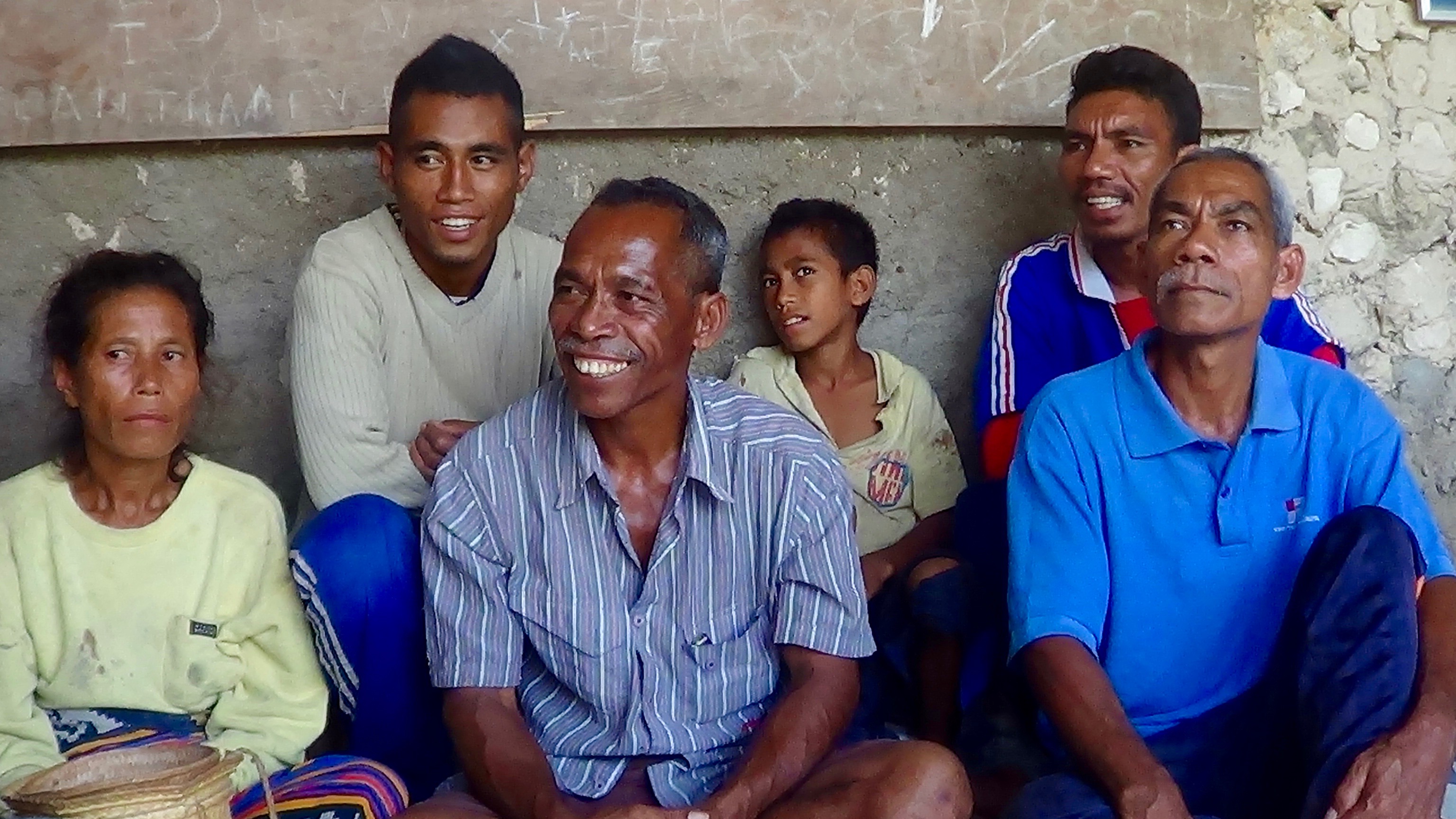
Photo: Santos Viegas (second from left) with his family, sharing the story of the Serelau spring, in the Lautem sub-district.
Video: Santos Viegas sharing the story of the Serelau spring, in the Lautem sub-district.
The story about Puinorili and Maunorili (Rata Lolo Puinorili ho Maunorili / Aiknanoik Puinorili no Maunorili)
The story of Puinorili and Maunorili is an origin story, describing the origin of a 30 metre high cave cliff face with a narrow overhang in the Com (Konu) district, the top of which is called Koimili Kayamili. This fable is about the life of two siblings, Maunorili, the brother, and Puinorili, the sister. They both lived on a big hill where the only way up or down was to climb up with a rope. One day Maunorili went to the jungle to go hunting, leaving Puinorili alone. A prince from Lety, ratu Moco, had been watching the hill from afar. One day he sailed on a boat and came ashore near the hill. He listened to the song Maunorili sung each time he returned to the foot of the hill to ask his sister to lower the rope. One day, when Maunorili left down the rope to go hunting with his dogs and hunting equipment (his spear, machete, knife and bag), the prince called to Puinorili to lower the rope. Not knowing it wasn’t her brother, she let down the rope thinking to herself that her brother must have already caught an animal hunting and returned quickly. When Maunorili returned and asked his sister to lower the rope the prince forbade her. Maunorili waited for hours, calling to his sister to lower the rope as mosquitos from the forest were coming out, but the prince forbade her and sat on the rope to prevent her. Maunorili began to get bitten by mosquitos from the forest; they bit and sucked his blood from head to toe. Maunorili began to cry and spoke sadly. He spoke in Fataluku, words which mean: 'Puinorili e.e.e. o Puinorili… mosquitos – mosquitos from the forest are starting to bite and suck my blood o Puinorili'.
The sister replied: 'Maunorili e.e.e.e.e Maunorili I don’t know this prince'.
After the bother heard he wanted to reply but before he replied he was bitten on the sole of his foot and his foot began to turn to stone. He sung out to his sister: 'Punorili e.e.e.e.e Puinorili the sole of my left foot is turning to stone. Puinorili .eee. Puinorili ..e.e.e… Puinorili - the toes on my left food are turning to stone, Puinorili.'
Hearing the cries of her brother Puinorili begged the prince to help to lower the rope so that he could come up the hill. She cried out to her brother: 'Maunorili e.e.e.e.e.. Maunorili I don’t know this prince, who has wrapped up the rope'.
Maunorili was suffering now; he’d been bitten from the head to the toe, and his dogs had already turned to stone. 'Punorili ..e.e.e… Puinorili part of me is already petrified, on my left side and now on my right I have turned to stone. Punorili .e.e.e.'
Hearing her brother singing sadly, she begged again the prince to lower the rope, but he still refused and stayed sitting on the rope. Maunorili turned quiet as his body slowly turned to stone, along with his hunting equipment – his spear, machete, knife, dogs and his bag. His body and his hunting equipment are the names of the lower part of the rock, Maunorili.
The prince eventually let the rope down and Puinorili saw her brother but it was too late, and he had turned to stone. The prince and Puinorili lived together on top of the hill, which is named Koimili Kayamili.
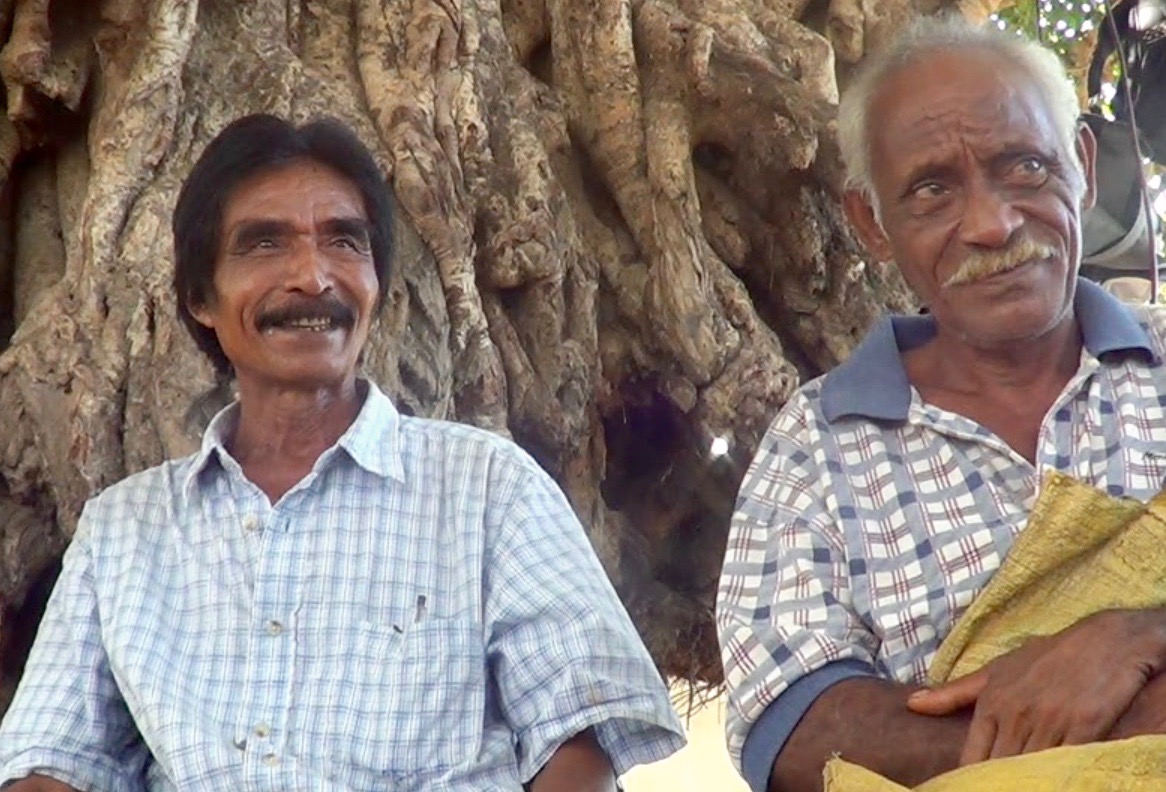
Photo: Elias dias Quintos telling the story of Puinorili and Maunorili in aledia Loho Matu, Lautem sub-district.
Video: Elias dias Quintos telling the story of Puinorili and Maunorili in aledia Iraono, Lautem sub-district.
Ethnographic researchers Pannell and O’Connor documented a slightly different account of the story in a 2007 journal article in Asian Perspectives, in which they document local storytellers recounting that ‘a large flood caused by incessant rainfall and rising sea levels killed everyone except for a Fataluku woman (poi) and man (mau) left on top of the limestone terraces at Poinorili. The woman lived high up on the cliff face, while the man resided at the base. In order to have sex, the woman lowered a rope down from her cliff-top residence and the man climbed up, leaving his seven hunting dogs at the bottom. In due course, the man and the woman had seven daughters and seven sons’ (2007, p. 197).
Orphan's story (Iharala Mocoru)
Vincente da Goma in aldeia Loho Matu, Lautem sub-district tells a rata lolo about young orphan children, a brother named Puiletemaa and sister, Levepuimaa. Their life was one of suffering and trouble, they survived eating papaya leaf when they were hungry. Each day they cooked papaya leaf and pieces of bean (fofon). When her young brother wanted to eat only fofon his sister forbade him. One day when his sister went out the brother ate fofon. When the sister found out she hit her brother badly. The young boy ran away to find his parent's ghost, which after a long journey, he found.
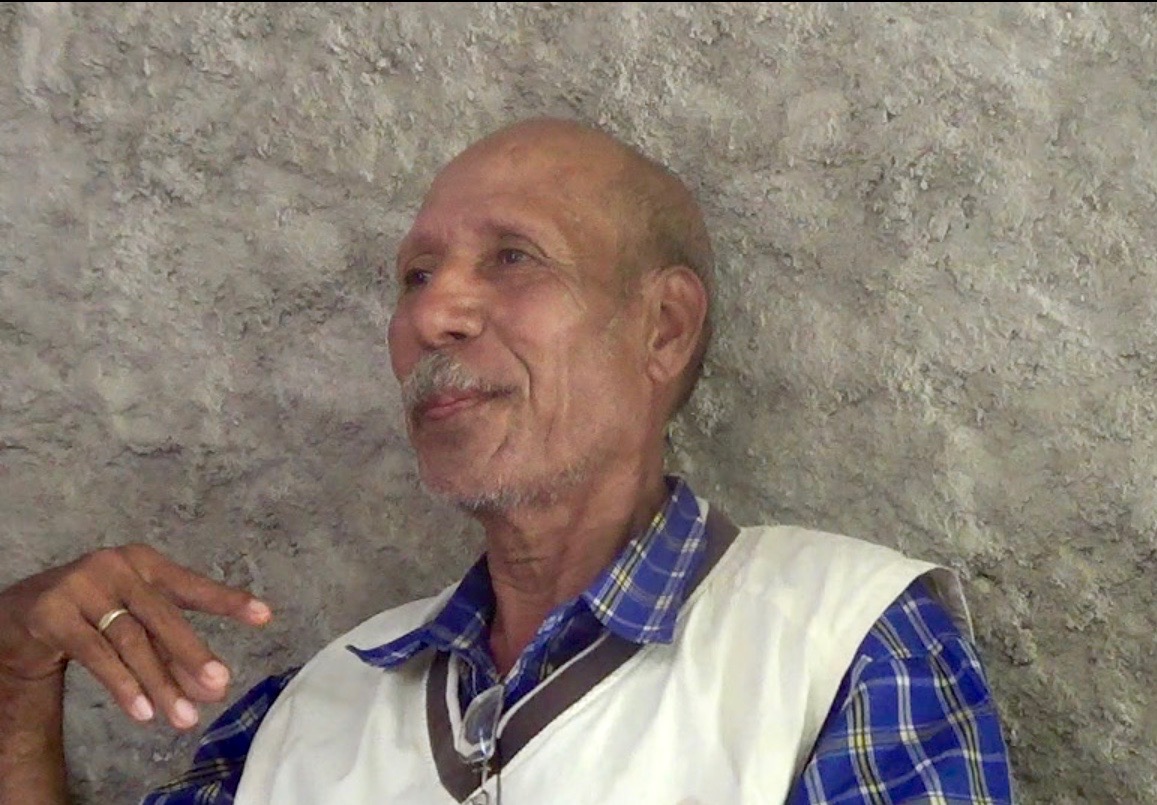
Photo: Vincente da Goma tells the story of Ilarala Mocoru in aldeia Loho Matu, Lautem sub-district.
The story of the man with two wives, Acanaltou and Teterentau (Acanaltou ho Teterentau)
The story of Acanaltou and Teterentau was documented in two villages, in aldeia Paijahara, in Lautem sub-district and aldeia Malahara, Lospalos sub-district. The story is about two women, married to the same man. The first wife wasn't able to have children because she was infertile. The second wife was able to become pregnant, and gave birth to twins. The first wife was jealous. When the young wife was still in bed tired from giving birth the older wife took the twin babies away and swapped them with twin kid goats, laying them beside the young wife. She took the twin babies away into the jungle. This made for great sorrow with the family in the story.
The story in aldeia Paijahara, the women promise to her husband that she will give him a boy with the star in his head and the moon in his chest.
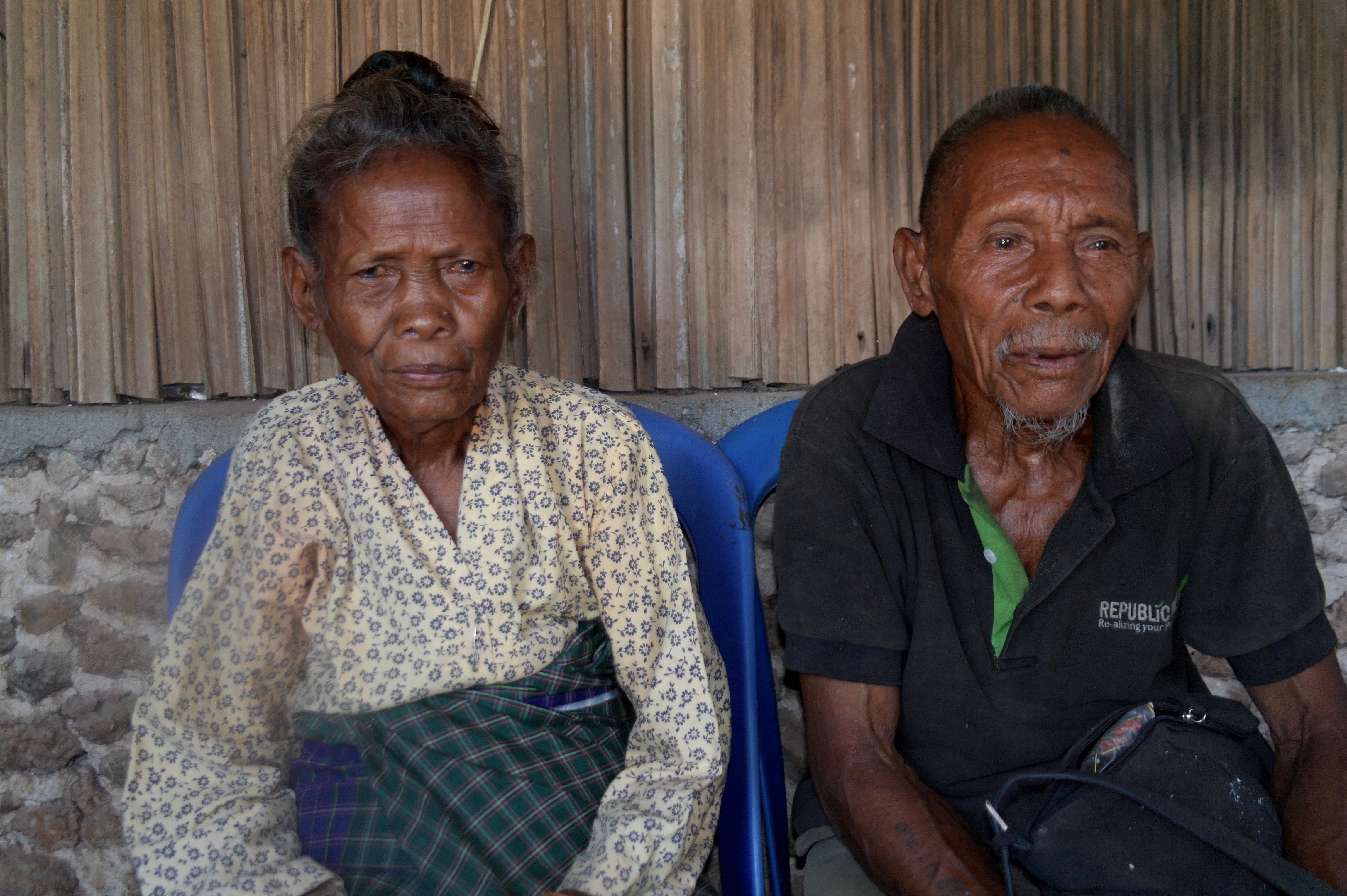
Photo: Miguel da Dosta and his wife tell the story of Acanaltou and Teterentau in aldeia Paijahara, Lautem sub-district.
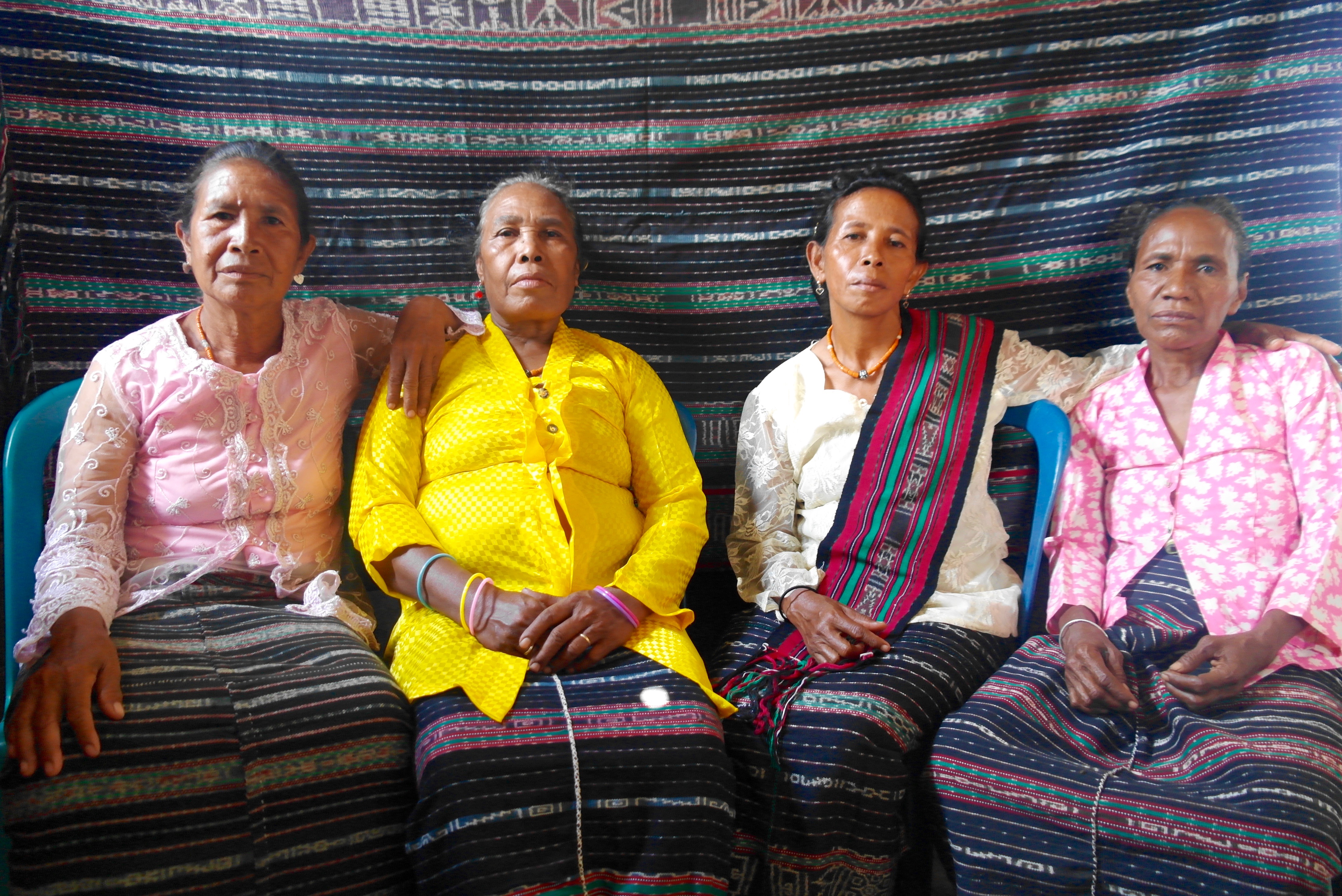
Photo: Regina da Cunha (second from left) tells the story of Acanaltou and Teterentau in aldeia Malahara, Lospalos sub-district.
Story about a father who ate his daughter's heart (Moco Tupur I Ari Una)
A rata lolo is about a man who ate his daughters heart (Moco Tupur I Ari Una) was told by Raul da Costa in aledia Punu, in the Lautem sub-district. The story is of a man, who left his pregnant wife in order to travel to a far away place. Before he began his journey he told his wife: 'Wherever you give birth, if it is a girl, kill her and store her heart for me to eat, but if it is a boy keep him alive.' On his way home, a lot of people received him. He played a babodook, and shouted, 'Bring me my daughters heart, I'm going to eat it.'
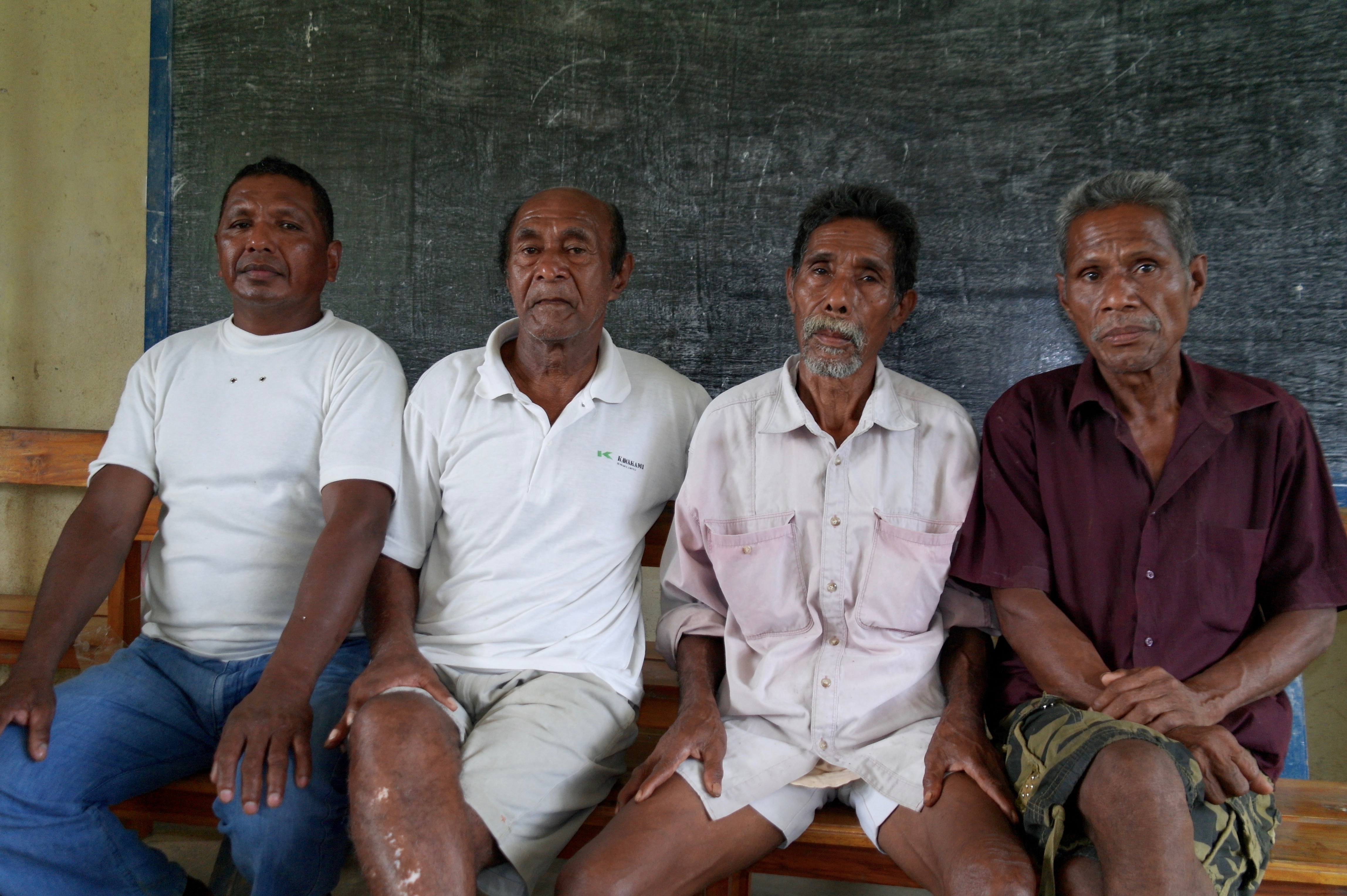
Photo: Raul da Costa (third from left) tells the story of Moco Pupur I Ari Una, in aldeia Punu, Lautem sub-district.
The prince from Latu Loho (Aiknanoik)
Luis Marques Cabral from aldeia Kodu, in Lautem sub-district tells the story of the prince from Latu Loho who married many wives and brought them back to his village. The story goes that a boy from the Latu Loho tribe was missing, and his parents were worried that he had died. The missing boy was eventually found in a village now known as Viqueque. In this village he had married a girl and given the bride price. He then went to Bacau and married another girl and gave a bride price, and continued his journey to Laga, Laivai and then finally he returned to his home to show his parents he had many wives in foreign lands. His parents were excited and gathered his village to celebrate with a Bidu and Jededai ritual.
Photo: Luis Marques Cabral (at left) tells the rata lolo of the prince from Latu Loho from Kodu, in Lautem sub-district.
The story of a woman who gave birth to a handkerchief (Tupur Un I Tu Lesu Me Vale)
Gracinda dos Anjos da Assuncāo in aldeia Pitileti, Tutuala sub-district tells a story Tupur Un I Tu Lesu Me Valeabout, woman that was pregnant and gave birth to a handkerchief. The handkerchief was put into a traditional flat basket called 'Poko' made of palm leaf. As the handkerchief grew up month by month the mother made a new basket to fit. Each day when the parents were in the field the handkerchief came out of the basket and transformed into a beautiful young woman and cooked rice, vegetables and yam for her parents, and cleaned the house for them. Each day the parents returned home to find their house clean and food ready for them on the table, but they didn't know who was looking after them. One day her mother left for the field but her father stayed behind, hiding under his sleeping mat. The girl climbed down from the basket and began cooking, to her father's surprise. Once she was finished cooking she wanted to go back to the box, but the parents wanted them to show herself and stay with them as a human, and she accepted. They found her a suitor and she was married and had children of her own.

Photo: Gracinda dos Anjos da Assuncāo (at left) tells the rata lolo Tupur Un I Tu Lesu Me Valeabout in aldeia Pitileti, Tutuala sub-district.
The story about a baby of the Zenlai ratu (Rata tu Zenlai i Moco Hini)
Rosinda Martins tells the fable about a baby that died the day he was born. The baby was buried with a young coconut, so that according to tradition, he can drink when he feels thirsty. As he was so young, he could not drink so be cried in Makua or Lovaji Ward (languages that no long exist) so that other ghosts would help him. His ancestor ghost gave him milk, to stop him crying.
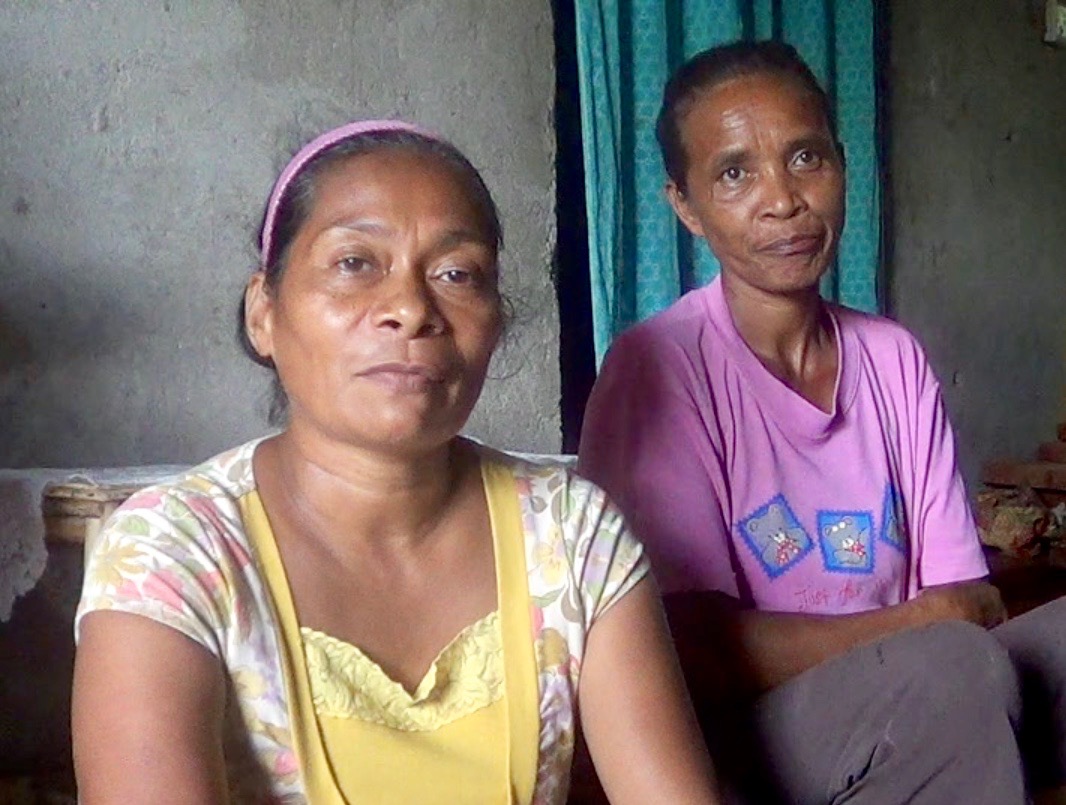
Photo: Rosinda Martins (at left) tells the rata lolo Rata tu Zenlai i Moco Hini in aldeia Pitileti, Tutuala sub-district.
Video: Rosinda Martins tells the rata lolo Rata tu Zenlai i Moco Hini in aldeia Pitileti, Tutuala sub-district.
Can't find what you're looking for? Try viewing the site map.
